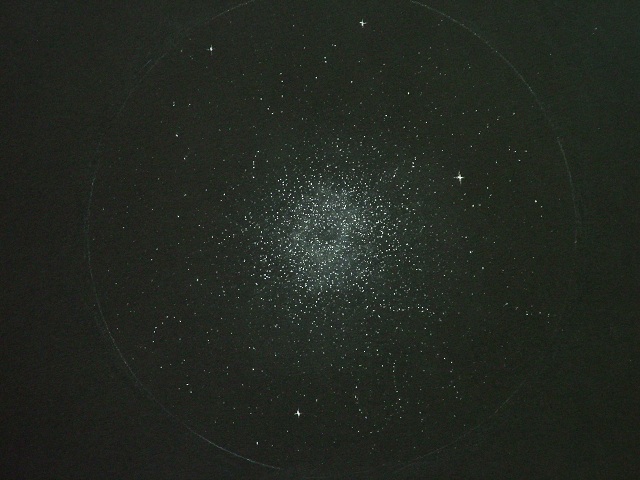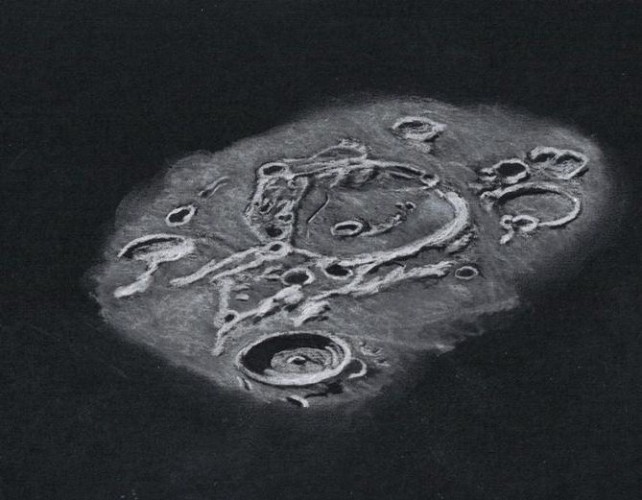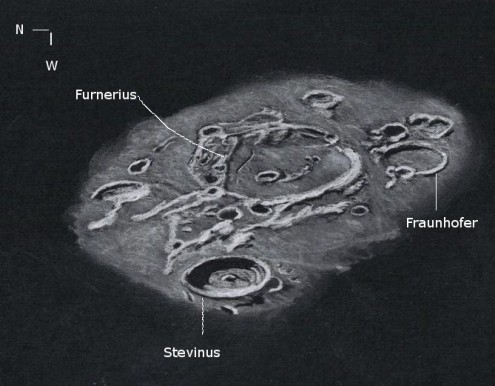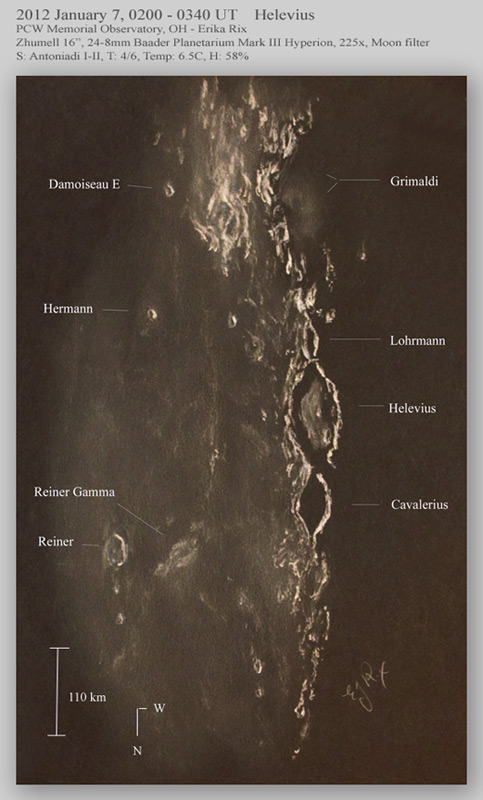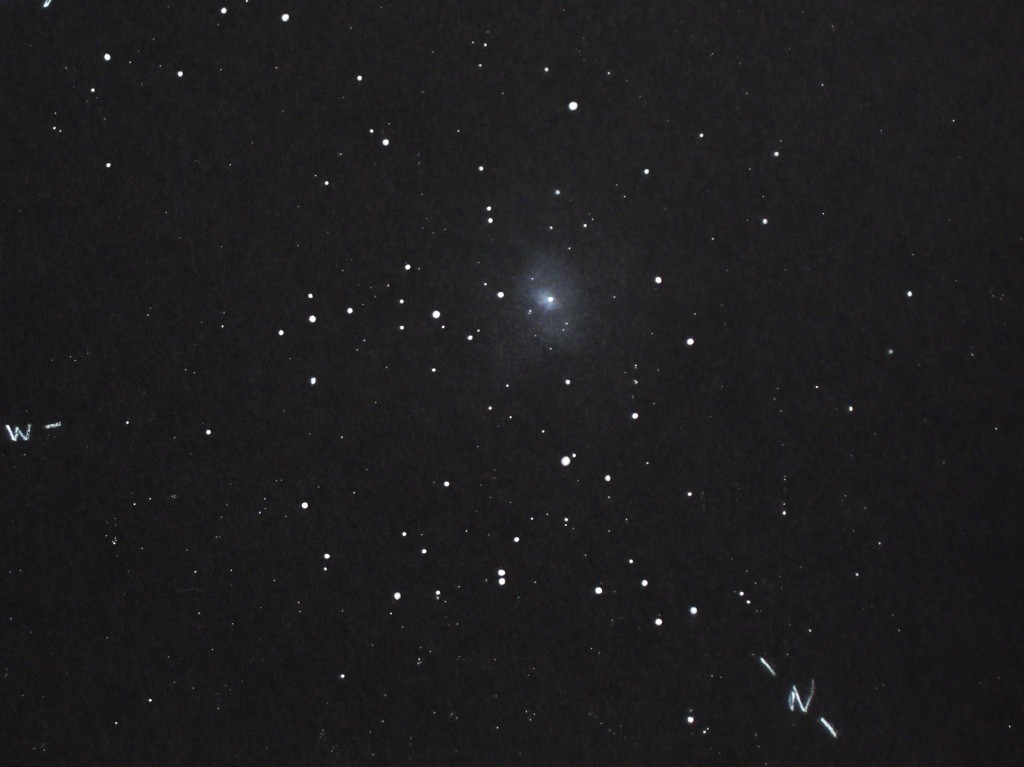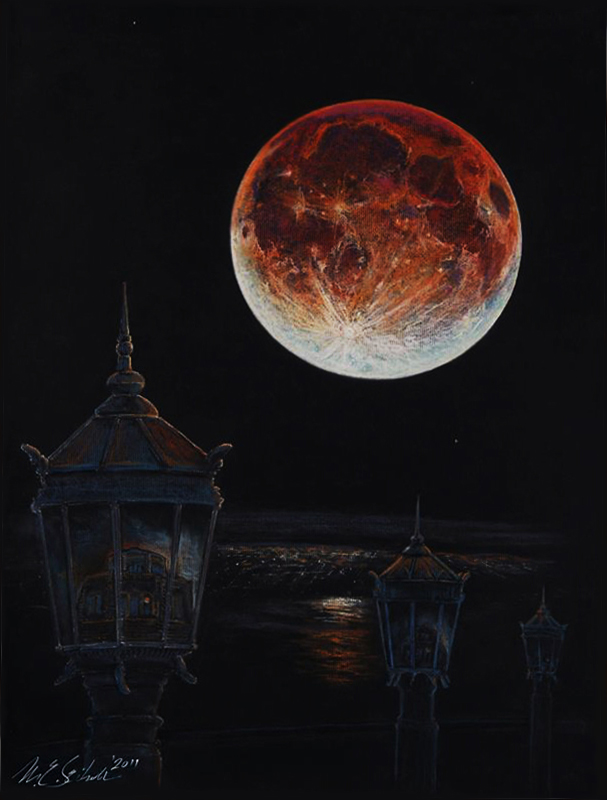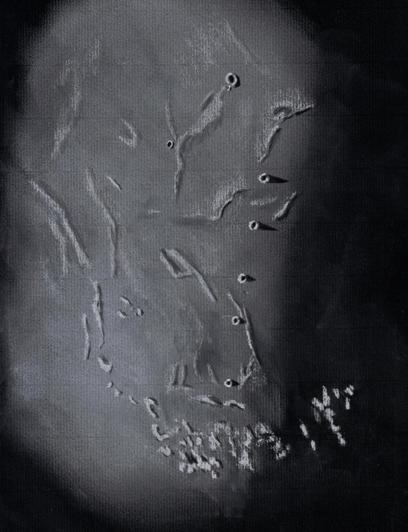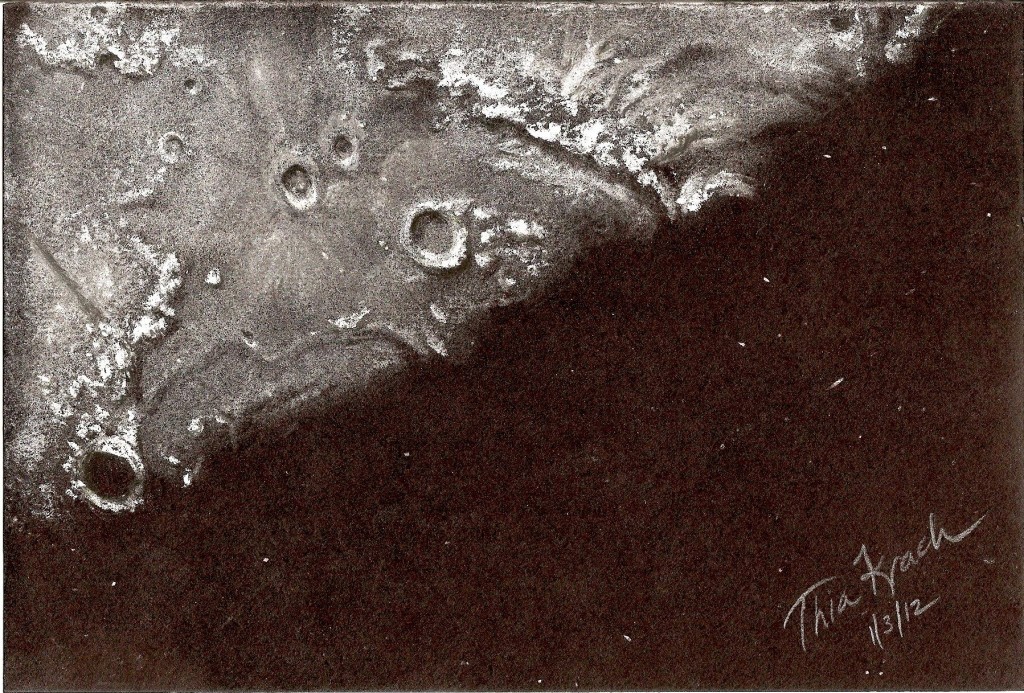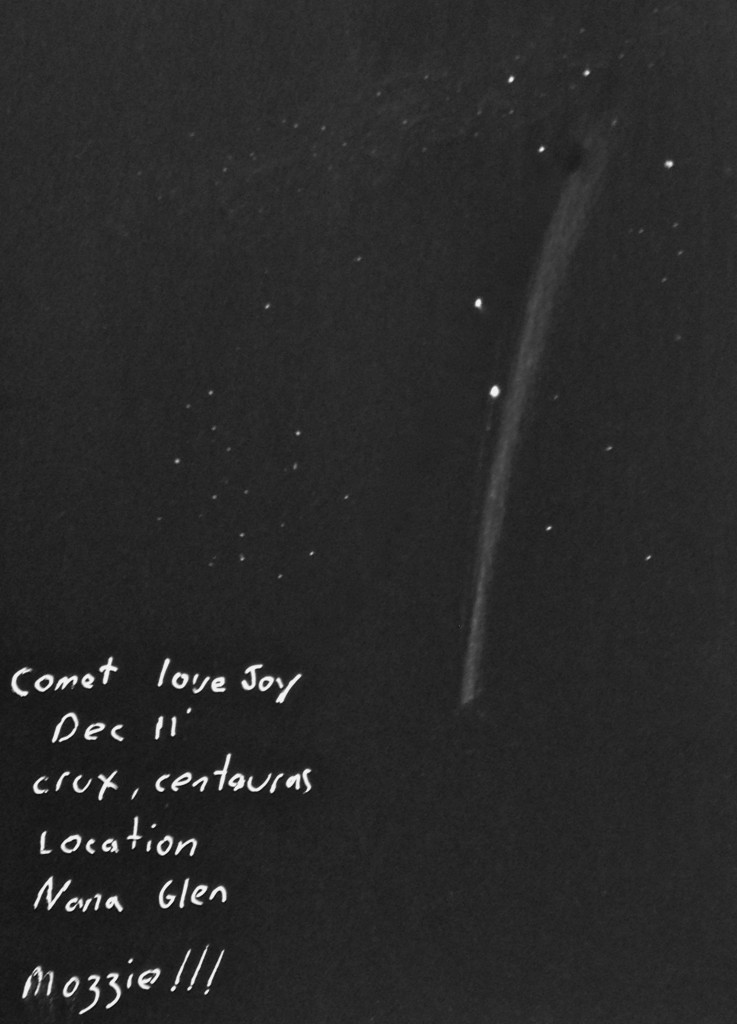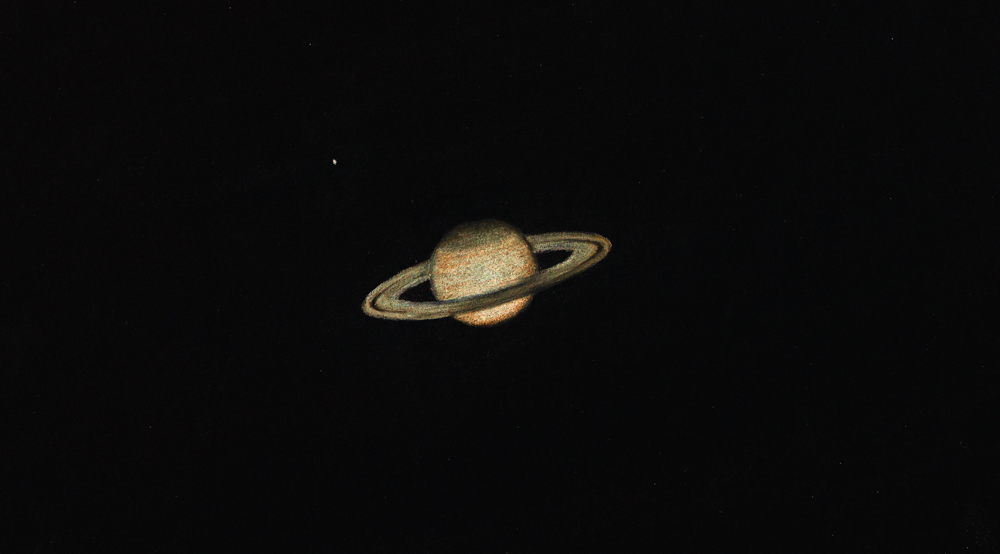
Object Name: Saturn
Object Type: Planet
Location: Deventer, The Netherlands
Date: May 13, 2012
Media: Pastel pencils on black paper
Last night I wanted to make a sketch of Saturn, mostly to capture as much moons as possible through my old 75mm f/15 Polarex/Unitron refractor. After 45 minutes of sketching at 200x with pastel pencils on black paper, Saturn was pretty much done (although I found it surprisingly difficult to draw a good ellipse for the rings), and just when I added the easily visble Titan, I heard some droplets on the trees next to me and felt something on my head: RAIN! I immediately covered the pastel sketch witch my hand and rushed inside my shed. After the sketch was save I pulled the telescope out of the rain. The most abrupt ending of a sketching session ever! I had completely missed the incoming clouds while viewing through the eyepiece.
Anyway, both the sketch and the telescope survived. Sadly with only one moon observed: Titan.
Clear skies and kind regards,
Roel Weijenberg
www.roelblog.nl


